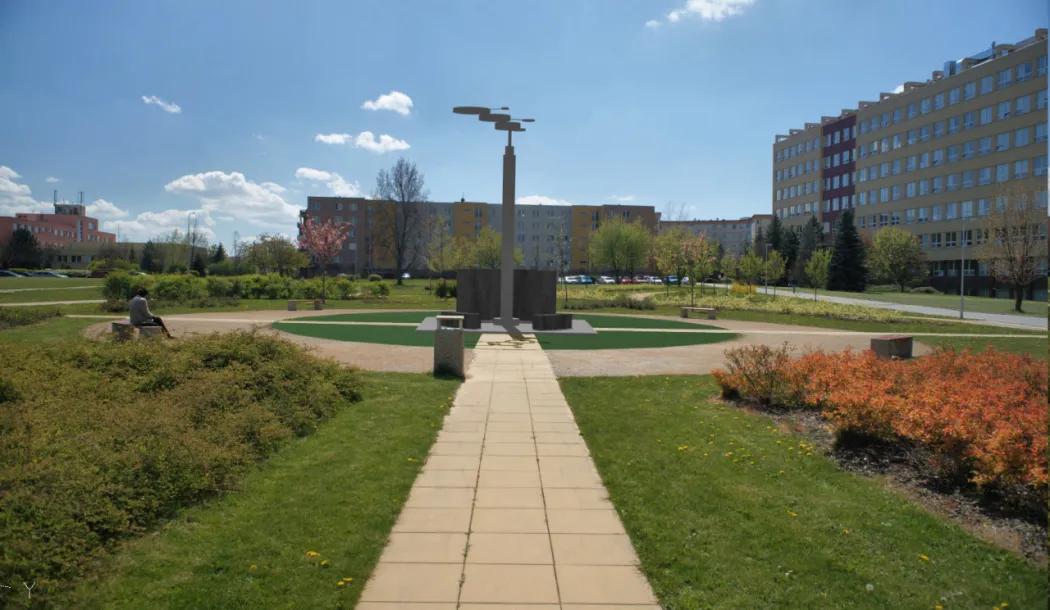In order to commemorate prof. Václav Dolejšek, the Institute of Thermomechanics of the Czech Academy of Sciences plans to erect a monument in front of its building at the Mazanka Park in Ládví. The site is located in close vicinity of the Institute of Physics of the Czech Academy of Sciences.
Prof. Václav Dolejšek (1895 – 1945) was a key experimental physicist of the twenties and thirties of the 20th century. He pioneered teamwork in Czech science and promoted the synergies between science and industry; he was also a keen researcher in the field of X-ray spectroscopy and the discoverer of new spectral lines of solids and gases. He was killed by the Nazis in a concentration camp in Terezín, Czech Republic, for his involvement in an anti-Nazi guerrilla group.
He studied mathematics and physics at the former Czech University in Prague to cultivate his passion for natural sciences he already felt like a youngster. His studies were interrupted by his being drafted to the Macedonian front during the WWI. He returned to complete his studies in 1918 and, in 1919, he became an assistant professor under prof. Bohumil Kučera at the Institute of Physics at Charles University. Professor Kučera influenced Mr Dolejšek significantly and, among other things, introduced him to Mr Jaroslav Heyrovský, a later lifelong friend of Mr Dolejšek.
Mr Dolejšek’s first stay abroad was in Lund, Sweden, visiting Mr Manne Siegbahn, the most prominent expert on X-ray spectroscopy of his time. Here, Mr Dolejšek made the highly anticipated discovery of a series of X-ray spectra of uranium, thorium and bismuth. His predecessors in discovering X-ray spectra had been awarded the Nobel Prize for their discoveries. However, when Mr Dolejšek was invited by prof. Siegbahn, 17 years later, to submit evidence to document his discovery in order to be nominated for the Nobel Prize Award, Mr Dolejšek responded, as evidenced by his correspondence, that he thinks he does not deserve such a Prize yet and proposed Mr Heyrovský instead.
The stay in Lund was a milestone in Mr Dolejšek’s career in spectroscopy and vacuum physics. In Prague, he then built an X-ray spectroscopy laboratory, which in many ways became a pioneering workplace. Mr Dolejšek created a friendly environment, resulting in successful teamwork. As an associate professor at Charles University, he brought a number of capable experimenters to the workplace and personally supervised their professional development. Later, (as a professor), he laid the foundation of the Institute of Spectroscopy at Charles University. Intense scientific work, however, marked his personal life – he would get married three times to eventually harbour in a happy marriage. Mr Dolejšek was the father of four children.
Mr Dolejšek’s effort to promote the cooperation between science and industry in particular during the Great Depression proved clear-sighted. In collaboration with Škoda factories, an applied research workplace was set up, which helped continue the activity of the Institute of Spectroscopy and further increase the quality of the technologies used by the Škoda. Practical physics was pursued by him in a number of University lectures. The deterioration of the political situation made him embark on lecturing on "The Use of Microphysics in Military Technology". As a former soldier, he found it very difficult to see the Czechoslovak Republic having to succumb to the conclusions of the Munich Treaty.
After the German army occupied Czechoslovakia, the Institute would gradually lose its international students; workers would seek asylum abroad or would be forced to leave their job due to their Jewish ancestry. Prof. Dolejšek decided to join a guerrilla group entitled “Ataman”, centred around the building and the operation of an illegal transmitter used to communicate with the exile government located in London. After the closedown of Universities throughout the territory of Czechoslovakia, he was banned from scientific work and, in October 1944, after he was revealed, he was arrested by Nazi civil police, subjected to long-term interrogation and sent to a concentration camp in Terezín, Czechoslovakia. Here, on the 3/ 1/ 1945 he died in a dysentery epidemic.
To celebrate this outstanding scientist, an idea to erect a monument was set forth. In response to a competition aimed at selecting a winning design of the monument, 28 proposals were delivered; the expert selection committee chose a proposal submitted by Mr František Svátek. He said: “The purpose of my design is to accentuate the work by Mr Václav Dolejšek. The eye-catching kinetic part of the monument, responsive to the wind, is to attract the attention of the viewer but also to make him/her contemplate the endless mysteries of nature as well as those who seek to uncover them.“ If you wish to contribute to the commission of the monument organised by the Institute of Thermomechanics, you are welcome to do so until the 30th of June 2019.
References:
Miroslav Rozsíval: Václav Dolejšek (1895 – 1945). Vesmír.
Fund-raising campaign for the commision of the monument to commemorate Czech physicists prof. Dolejšek

